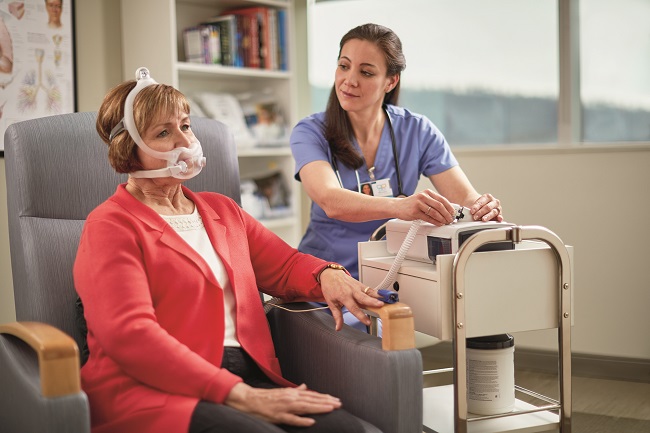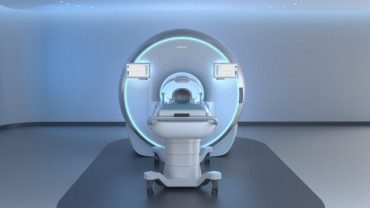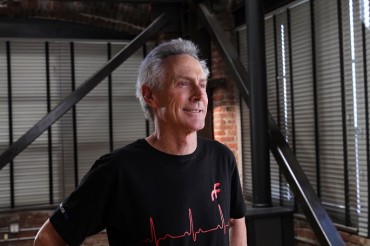Amsterdam, the Netherlands, Nov. 4 (Korea Bizwire) – Royal Philips (NYSE: PHG, AEX: PHIA), a global leader in health technology, today announced the launch of Philips Ventilator BiPAP A40 EFL. With the introduction of this non-invasive ventilator, Philips extends its homecare solutions with a new ventilation therapy feature for chronic obstructive pulmonary disease (COPD) patients to breathe easier. Now, pulmonologists can identify COPD patients with expiratory flow limitation (EFL) and treat them with targeted therapy to reduce symptoms and increase their comfort while sleeping. The BiPAP A40 EFL ventilator continuously and optimally adjusts pressure based on patient needs [1, 2].
BiPAP A40 EFL is the first and only non-invasive ventilator that allows health care professionals to automatically screen for and detect EFL, then provide optimal homecare therapy to dynamically and automatically abolish EFL [1]. This helps to reduce the patient’s work of breathing. Built with Philips proprietary and clinically validated ExpiraFlow technology, BiPAP A40 EFL is designed to connect across the care pathway – from diagnostic work to point of care therapy – to enable informed clinical decisions and optimize ventilation therapy, even remotely.
More than 50 percent of COPD patients experience EFL – limited exhalation of breath from the lungs – which occurs in the lower airways when patients are breathing quietly [2]. EFL causes hyperinflation, or breathing at increased lung volumes. COPD patients with EFL are more likely to be hospitalized more often and have increased mortality rates, however EFL is difficult to detect and often undertreated, despite its prevalence. Philips unique ExpiraFlow technology automatically detects EFL more accurately than any alternate methods [3] to enable the more effective treatment of patient in the home and help avoid hospital readmissions [2].
“ExpiraFlow Technology represents a shift in the paradigm of ventilator COPD management toward more personalized therapy, which automatically optimizes ventilation to the individual needs of the patient,” said Peter Calverley, Professor of Respiratory Medicine, School of Aging and Chronic Disease at the University of Liverpool. “By monitoring the presence of EFL on a breath-by-breath basis, the A40 EFL system can automatically adjust therapy pressures to ensure efficient lung emptying and better gas exchange. This new focus allows us to consider individual differences in lung mechanics and gas exchange when managing complex respiratory patients.”
“EFL often goes undetected, meaning patients don’t receive the care they need to improve their disease,” said Eli Diacopoulos, Respiratory Care Business Leader at Philips. “At Philips, we’re committed to identifying these gaps and meeting the challenges that COPD patients face every day. BiPAP A40 EFL aims to revolutionize COPD care solutions. Clinicians can now detect EFL in hypercapnic COPD patients at the point of care, ensure personalized patient treatment at home and monitor care remotely.”
The BiPAP A40 EFL leverages Philips leading connected solution platform to streamline diagnostic work through integration to Philips Alice sleep lab and home diagnostic systems. When prescribed and used in the home, the BiPAP A40 EFL connects to Philips Care Orchestrator cloud-based care management system. By making it easier to analyze and share information [4], this connectivity enables providers to make faster, more informed clinical decisions, and identify and prioritize patients who are in need of therapy intervention to better manage chronic respiratory patient care from hospital to home.
BiPAP A40 EFL is CE marked and initially available for sale in selected countries in Europe [5], with expansion in to additional European markets expected in 2021. This solution is not available in the United States. For more information on Philips Ventilator BiPAP A40 EFL, visit www.philips.com/targetEFL.
[1] ES Suh1, P. P. (2014). Abolition of expiratory flow limitation in severe COPD using auto-titrating CPAP based on the measurement of within-breath airway reactance determined by the forced oscillation technique. ATS Poster, 1.
[2] Aarli, B. B., Calverley, P. M., Jensen, R. L., Dellacà, R., Eagan, T. M., Bakke, P. S., & Hardie, J. A. (2017). The association of tidal EFL with exercise performance, exacerbations, and death in COPD. International journal of chronic obstructive pulmonary disease, 12, 2179
[3] Calverley, Dellaca, Non-invasive Screening of Expiratory Flow Limitation in Chronic Obstructive Pulmonary Disease. European Respiratory and Pulmonary Diseases. 2018;4(suppl. 1):3-6
[4] Key ventilation parameters, alarm data, device performance and patient usage.
[5] France, Italy and the United Kingdom
For further information, please contact:
Meredith Amoroso
Philips Global Press Office
Mobile: +1 724-584-8991
Tel: meredith.amoroso@philips.com
About Royal Philips
Royal Philips (NYSE: PHG, AEX: PHIA) is a leading health technology company focused on improving people’s health and well-being, and enabling better outcomes across the health continuum – from healthy living and prevention, to diagnosis, treatment and home care. Philips leverages advanced technology and deep clinical and consumer insights to deliver integrated solutions. Headquartered in the Netherlands, the company is a leader in diagnostic imaging, image-guided therapy, patient monitoring and health informatics, as well as in consumer health and home care. Philips generated 2019 sales of EUR 19.5 billion and employs approximately 81,000 employees with sales and services in more than 100 countries. News about Philips can be found at www.philips.com/newscenter.
Attachments
- A patient is setup on Philips Ventilator BiPAP A40 EFL
- Philips Ventilator BiPAP A40 EFL aims to abolish EFL automatically
- Philips Ventilator BiPAP A40 EFL
Source: Philips International B.V. via GLOBE NEWSWIRE








